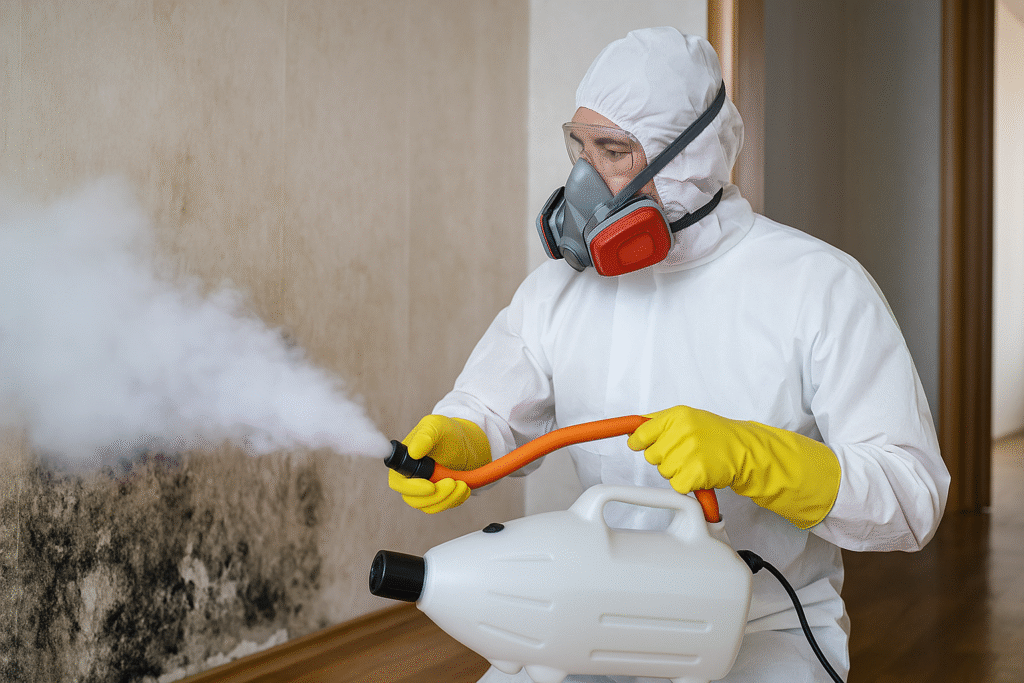Guide to Biohazard Cleaning Regulations in the UK

Quick Summary
UK biohazard cleaning regulations create a comprehensive safety framework that governs everything from risk assessment to waste disposal. These regulations protect workers, property occupants, and the environment from exposure to dangerous biological agents.
- COSHH Regulations: Control exposure to hazardous biological substances through risk assessment and safety measures
- Waste Management Laws: Govern proper classification, handling, and disposal of biohazardous materials
- Health and Safety Requirements: Mandate training, PPE, and safety protocols for biohazard work
- Professional Standards: Ensure certified companies meet strict compliance requirements
Why This Matters for Property Managers and Facility Leaders
Understanding biohazard cleaning regulations protects your organisation from legal liability, regulatory violations, and safety risks. Recent data from the Health and Safety Executive (HSE) indicates that biohazard-related incidents in UK commercial properties have increased by 17% over the past three years. Property managers must ensure compliance with multiple regulations to maintain safe environments and avoid substantial penalties.
The COSHH Regulations Framework
Core Requirements for Biohazard Control
Control of Substances Hazardous to Health (COSHH) Regulations 2002 (as amended) requires employers to: assess the risks that arise from the use of hazardous substances and implement appropriate control measures. For biohazard cleaning, this creates specific obligations for risk assessment, exposure control, and worker protection.
The main piece of legislation that applies to infections at work is The Control of Substances Hazardous to Health Regulations 2002 (COSHH) Micro-organisms are covered in COSHH by the term biological agents. These biological agents include bacteria, viruses, fungi, and other microorganisms that may cause infection, allergy, toxicity, or create health hazards.
Biological Agent Classification System
The HSE maintains an Approved List of Biological Agents that categorises organisms into four hazard groups:
Hazard Group 1: Low risk. Requires basic safety precautions. Hazard Group 2: Moderate risk. Requires enhanced safety precautions and specialised training. Hazard Group 3: High risk. Requires advanced safety precautions, specialised training, and containment facilities. Hazard Group 4: Highest risk. Requires maximum safety precautions, specialised training, and high-level containment facilities.
Most biohazard cleaning scenarios involve Groups 1-3 biological agents, though proper classification requires professional risk assessment for each situation.
Waste Management and Disposal Regulations
Hazardous Waste Classification
Waste is generally considered hazardous if it (or the material or substances it contains) are harmful to humans or the environment. Biohazardous materials fall under strict waste management regulations that govern their entire lifecycle from generation to final disposal.
Waste contaminated by bloodborne viruses (BBVs) must be regarded as a hazardous substance, unless it is made safe by effective inactivation of BBVs before disposal. This creates specific requirements for handling blood, bodily fluids, and contaminated materials.
Legal Obligations for Waste Producers
The regulations place a responsibility on organisations to ensure any hazardous waste produced or handled causes no harm or damage. Key requirements include:
- Proper waste classification using European Waste Catalogue codes
- Secure storage in appropriate containers
- Use of licensed waste carriers for transportation
- Complete documentation and tracking through consignment notes
- Disposal at authorised treatment facilities
In Scotland, unattended death cleanup must comply with the Special Waste Regulations 1996, which govern the handling and disposal of hazardous materials, including biological waste.
Health and Safety Requirements
Personal Protective Equipment Standards
The UK’s Personal Protective Equipment at Work Regulations 2022 require that PPE be suitable for the risks involved, properly maintained, and used with adequate training and instruction. For biohazard cleaning, this mandates specialised equipment selection, maintenance protocols, and comprehensive training programmes.
Training and Competency Requirements
Training requirements for biohazard cleanup teams are extensive and ongoing. Technicians must understand COSHH regulations, bloodborne pathogen protocols, and proper waste disposal procedures. Professional cleaning companies typically require certification from recognised bodies such as the National Academy of Specialist Cleaning and Restoration Contractors (NACSC).
Workplace Exposure Limits
Monitoring normally makes reference to ‘Workplace Exposure Limits’ (WELs) published by HSE. These limits should not be exceeded. Companies must monitor exposure levels and implement additional controls when limits are approached or exceeded.
Common Compliance Failures and Problems
Inadequate Risk Assessment
Many organisations fail to conduct proper COSHH risk assessments before biohazard incidents occur. Risk assessment is not just a paper exercise. It’s about taking sensible steps to prevent ill health. Without proper assessment, companies cannot implement appropriate control measures or ensure worker safety.
Improper Waste Classification
Misclassifying biohazardous waste as general waste violates multiple regulations and creates serious liability. Hazardous waste is not permitted to be disposed with non-hazardous waste at the same landfill site. This error can result in substantial fines and environmental damage.
Insufficient Documentation
Failing to maintain proper records of risk assessments, training, waste disposal, and health surveillance violates regulatory requirements. Keep simple records of your checks and actions, eg in a logbook, and keep these records for at least five years.
Inadequate Control Measures
Using inappropriate or insufficient control measures exposes workers and others to unnecessary risks. You need control measures that work and continue to work – all day, every day.
Frequently Asked Questions
What regulations apply to biohazard cleaning in the UK? The primary regulations include COSHH Regulations 2002, Health and Safety at Work Act 1974, Environmental Protection Act 1990, and various waste management regulations. These work together to create comprehensive safety and environmental protection requirements.
Do small businesses need to follow these regulations? Yes, all businesses handling biohazardous materials must comply with relevant regulations regardless of size. The complexity of requirements may vary, but fundamental safety and waste management obligations apply to all organisations.
What documentation is required for compliance? Key documents include COSHH risk assessments, waste transfer notes, training records, health surveillance records, and equipment maintenance logs. Records must typically be retained for at least five years.
How often should risk assessments be reviewed? Risk assessments must be reviewed whenever circumstances change significantly, new hazards are identified, or incidents occur. Best practice suggests annual reviews as a minimum, with more frequent updates for high-risk activities.
What are the penalties for non-compliance? Penalties can include substantial fines, prosecution, and enforcement action. Serious breaches may result in imprisonment for responsible individuals. Insurance claims may also be denied for incidents involving regulatory non-compliance.
How Clean Scene Bio Ensures Full Regulatory Compliance
Clean Scene Bio maintains strict adherence to all UK biohazard cleaning regulations through comprehensive compliance systems and ongoing professional development. Our CPD-accredited team stays current with evolving regulations and industry best practices.
We implement robust COSHH risk assessment procedures for every project, ensuring appropriate control measures and worker protection. Our waste management protocols exceed regulatory requirements, with full documentation and tracking through licensed disposal partners.
Our comprehensive approach to regulatory compliance includes complete risk assessment and planning before any work begins. We maintain detailed documentation throughout the project lifecycle, from initial assessment through final disposal certification. Our team receives regular training updates to ensure knowledge of current regulations and emerging best practices.
All Clean Scene Bio technicians hold relevant certifications and undergo continuous professional development. We work closely with regulatory bodies and industry organisations to maintain the highest standards of compliance and safety.
Contact Clean Scene Bio for Compliant Biohazard Services
Ensure your biohazard cleanup meets all UK regulatory requirements with Clean Scene Bio’s certified professionals. We handle the complex compliance requirements while you focus on recovery and business continuity.
Call us now for a free quote: 07719 956929
Email: info@chalfontcarpetandflooringco.co.uk
Serving Oxford, Buckinghamshire, London & Beyond
Our certified technicians understand the intricate regulatory landscape and ensure full compliance with all applicable UK regulations. We provide complete documentation and certification to support your legal obligations and insurance requirements.
